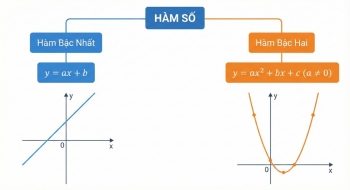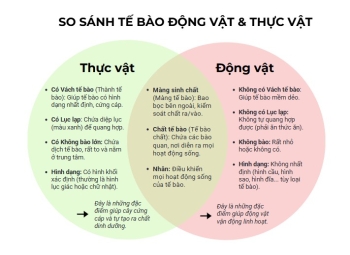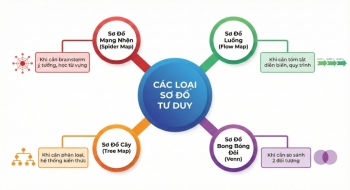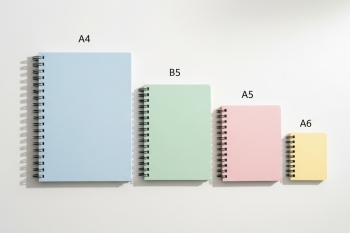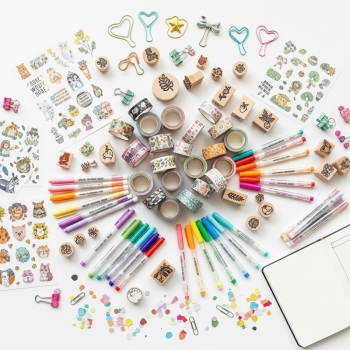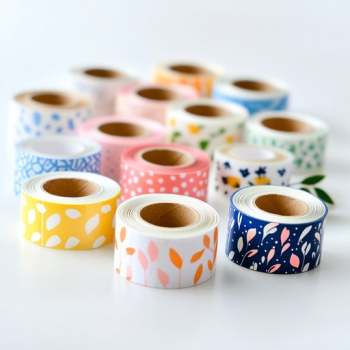The world of notebooks is incredibly diverse! But amidst the maze of lined, dot grid, grid, and blank notebooks, which one is the perfect choice for you?
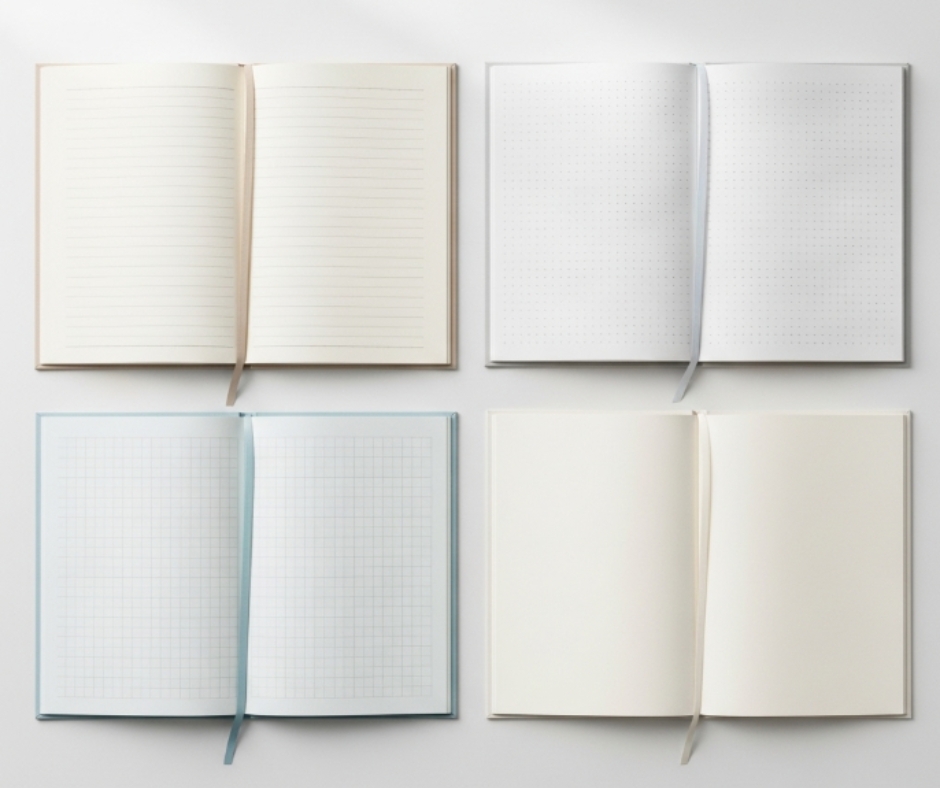
1. LINED NOTEBOOK: THE "NATIONAL" FAVORITE FROM SCHOOL DAYS

Concept: This is the "national" notebook, featuring parallel horizontal lines – a familiar companion from school days.
Applications:
- Lecture Notes: Perfect for recording long lectures, requiring neatness and straight alignment.
- Writing, Journaling: The lines prevent your handwriting from "flying around" freely, keeping pages clean and easy to read.
- To-do lists: Quick and clear bullet points and notes.
Pros:
- Easy to use: Extremely familiar, requiring no special skills.
- Content-focused: Helps you concentrate entirely on writing without being distracted by the page structure.
- Widely available: Found everywhere with countless designs and price points.
Cons:
- Less flexible: Difficult to draw charts, mind maps, or other creative layouts.
- Restrictive: The lines can sometimes feel rigid, limiting creativity.
2. DOT GRID NOTEBOOK: THE "RISING STAR" OF THE CREATIVE WORLD

Concept: Instead of long lines, a dot grid notebook features a network of small, faint, equally spaced dots. This is a delicate blend of structure and freedom.
Applications:
- Bullet Journaling: This is the perfect pairing! The dots serve as an ideal guide for freely designing layouts, from monthly, weekly, daily calendars to habit trackers and goal pages.
- Design, Sketching: Easily adjust proportions, draw logos, typography, or prototype website/app interfaces.
- Structured Notes: Can be used for straight writing while also easily creating tables and diagrams without looking cluttered.
Pros:
- Maximum flexibility: "Handles" writing, drawing, and designing. The dots provide enough guidance but aren't too prominent to cause distraction.
- Spacious, clean: Pages look "lighter" and more aesthetically pleasing than lined or grid notebooks.
- Encourages creativity: Opens up endless possibilities for personalizing your notebook.
Cons:
- Requires getting used to: If you're accustomed to lined notebooks, it might take a little time to adapt to writing on a dot grid background.
- Harder to find: Compared to lined notebooks, dot grid notebooks are not as widely available in all bookstores.
3. GRID NOTEBOOK: THE "EXPERT" OF PRECISION
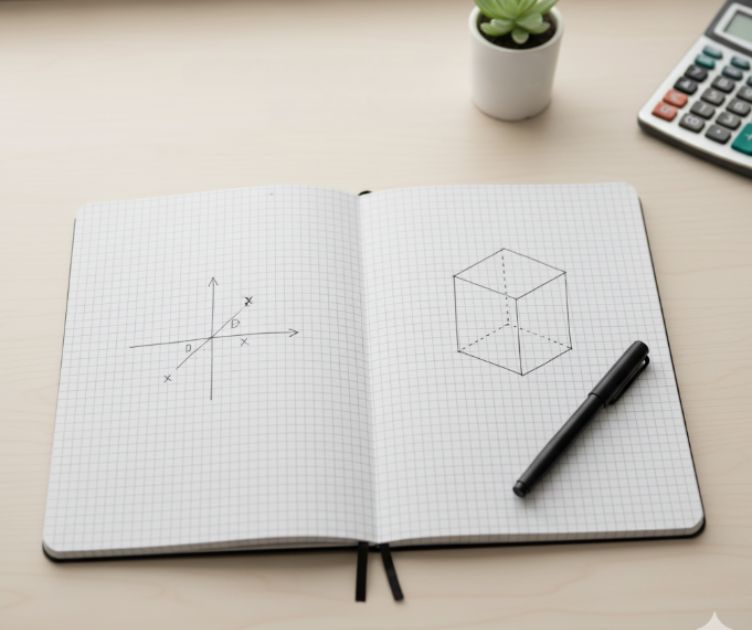
Concept: Essentially, a grid notebook (also known as a squared or graph notebook) is a type of notebook with paper pages pre-printed with horizontal and vertical lines forming a regular square grid. These squares are a wonderful "framework" for taking notes, drawing diagrams, sketching layouts, or even playing tic-tac-toe during breaks.
Applications:
- Studying natural sciences: Drawing function graphs, spatial geometry, and plotting data tables has never been easier.
- Pixel art, architecture design: The squares are intuitive and precise tools for measuring proportions.
- Accounting, inventory management: Recording data and calculations that require absolute alignment.
Pros:
- Clear structure: Provides maximum support for tasks requiring precision and organization.
- Versatile: Can be used for writing, technical drawing, and design.
- Easy alignment: All lines and shapes become simple to manage.
Cons:
- Dense grid: Can be visually overwhelming and overshadow the main content if you're only using it for general writing.
- Less "free-flowing": The square structure can sometimes feel a bit too "technical" and dry.
4. PLAIN/BLANK NOTEBOOK: THE "PLAYGROUND" OF ABSOLUTE FREEDOM
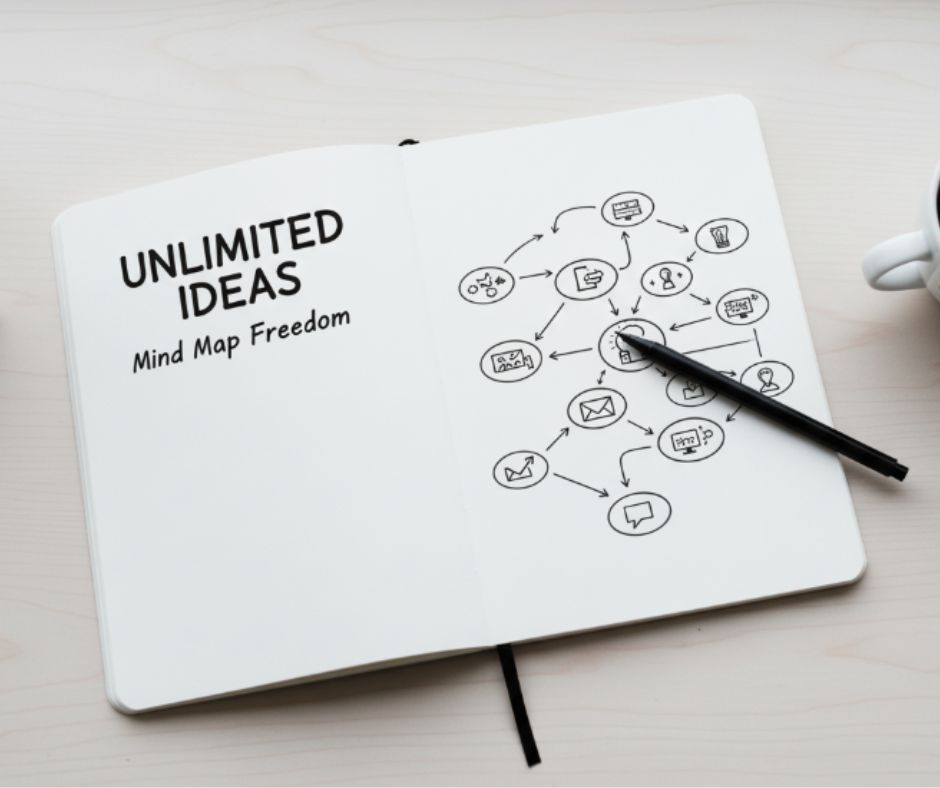
Concept: As the name suggests, this type of notebook features pristine blank pages, devoid of any lines or dots.
Applications:
- Drawing, sketching, doodling: The number one choice for artists to freely express ideas without any constraints.
- Brainstorming, mind mapping: A completely open space for ideas to connect in the most free-flowing way.
- Calligraphy: Allows the writer to fully concentrate on each stroke.
Pros:
- Infinite freedom: No limits whatsoever to your creativity.
- Content stands out: Every stroke and word becomes the focal point on the page.
- Pure writing experience: Fully feel the smooth glide of the pen on paper.
Cons:
- Difficult to write in a straight line: If you're not used to it, your handwriting can easily become crooked and messy.
- Not for beginners: Requires users to have the ability to arrange their own layouts.
CONCLUSION

No notebook type is inherently the best; there's only the one that best suits your needs and personality.
- If you're a diligent note-taker and appreciate tradition, stick with a lined notebook.
- If you're a "planner-holic" with a creative spirit who enjoys freedom within a framework, the dot grid notebook was made for you.
- If your work demands precision, logic, and structure, don't hesitate to choose a grid notebook.
- And if you're an artist with a free-spirited soul, eager to break all limits, a plain/blank notebook is your canvas for limitless expression.
We hope this article helps you find your ideal companion on your journey to conquering amazing ideas!
See more: Choose a "love" pen according to Vibe Gen Z: Level ups tips for taking notes 2025



